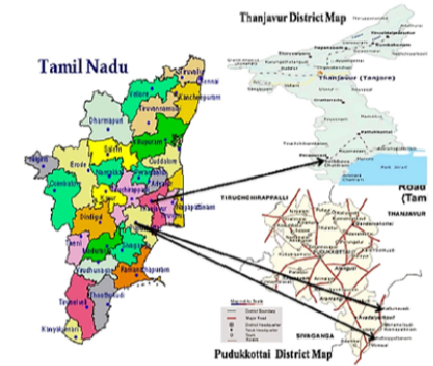


Indian Journal of Science and Technology
Year: 2023, Volume: 16, Issue: 23, Pages: 1726-1732
Original Article
B Megala1*, P Thirumalai Vasan2
1Research scholar, PG and Research Department of Biotechnology, Srimad Andavan Arts and Science College (Autonomous), Affiliated to Bharathidasan University, T.V.Kovil, Trichy, India
2Head, PG and Research Department of Biotechnology, Srimad Andavan Arts and Science College (Autonomous), Affiliated to Bharathidasan University, T.V. Kovil, Trichy, India
*Corresponding Author
Email: [email protected]
Received Date:12 January 2023, Accepted Date:31 May 2023, Published Date:09 June 2023
Objectives: To study endophytic bacterial population from 3 marine plants such as Avicennia marina, Salicornia brachiata and Suaeda maritima. Methods: The fresh leaves from the above plants were collected at Kattumavadi, Kottaipattinam and Sethubhavachathiram mangrove ecosystems during the period of December month. The leaves were surface sterilized and the inner tissues of the leaf bits were macerated and serially diluted for the isolation of bacterial endophytes and grown on Nutrient Agar (NA) Petri plates. The endophytic bacteria grown in the nutrient agar was identified with the help of gram staining and biochemical assessments. The statistical method of endophytic bacterial diversity was measured in phrases of Shannon’s and Simpson’s indices. Findings: Absolutely 219 colonies are recorded in three marine plant leaves consisting of Avicennia marina (109), Salicornia brachiata (52) and Suaeda maritima (58). The nine microorganisms were recognized and denoted by letter code such as BMBT 1 to BMBT 9 consisting of Bacillus amyloliquefaciens, B. Megaterium, B. Subtilis, Pseudomonas aeroginosa, Corynebacterium sp, B. licheniformis, Citrobacter sp, Halomonas sp and Mycobacterium sp. The results confirmed that most of the bacterial diversity belonged to Bacillaceae family. Endophytic bacterial range indices have been measured using a statistical method, which revealed variations in plant variety and species richness. The Simpson’s diversity indices of 3 marine leaves inclusive of Avicennia marina (0.345), Salicornia brachiata (0.368) and Suaeda maritima (0.341) have been cited with the maximum for Salicornia brachiata in comparison with different plant leaves. Novelty: These novel natural merchandise from marine Bacillus sp have been employed for the use of drugs, pesticides, carotenoids, and tools for bioremediation of heavy metallic toxicity.
Keywords: Endophytic bacteria; Avicennia marina; Salicornia brachiata; Suaeda maritima; Shannon and Simpson diversity; Bacillus subtilis
© 2023 Megala & Vasan. This is an open-access article distributed under the terms of the Creative Commons Attribution License, which permits unrestricted use, distribution, and reproduction in any medium, provided the original author and source are credited. Published By Indian Society for Education and Environment (iSee)
Subscribe now for latest articles and news.